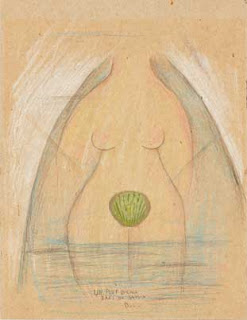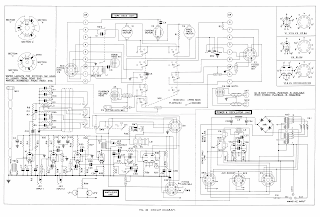Speed has some interesting observations and is very
opinionated when it comes to critiquing other artists. The book reads as if it
comes from another world, an age well before modernism, but you need to remember that
Cubism and early abstraction were already well established in mainland Europe
when it was written.
However when he gets to unpicking why he doesn’t like
academic approaches to drawing he has this to say about too much precision.
‘There must
be enough play between the vital parts to allow of some movement;
"dither" is, I believe, the Scotch word for it. The piston must be
allowed some play in the opening of the cylinder through which it passes, or it
will not be able to move and show any life. And the axles of the wheels in
their sockets, and, in fact, all parts of the machine where life and movement
are to occur, must have this play, this "dither." It has always
seemed to me that the accurately fitting engine was like a good academic
drawing, in a way a perfect piece of workmanship, but lifeless. Imperfectly
perfect, because there was no room left for the play of life. And to carry the
simile further, if you allow too great a play between the parts, so that they
fit one over the other too loosely, the engine will lose power and become a
poor rickety thing. There must be the smallest amount of play that will allow
of its working. And the more perfectly made the engine, the less will the
amount of this "dither" be’.
The concept
of a drawing having life comes up yet again, as it did in the previous post. In this case Speed comes up with
the idea of ‘dither’ to explain it. However he also warns against too much ‘dither’.
I can see
what he means, energetic markmaking for its own sake can become a mannerism and
when it does a drawing begins to lose authenticity.
I think
Speed’s book is a salutary read. It comes from a time when people could have
firm convictions as to what is right and wrong about art, convictions now long
denounced as outdated and obsolete in this time of post-post-modernism.
His
sections on composition like the one illustrated above, take me right back to school and those art classes
whereby we had to draw out the various underlying dynamics and geometries of a
painting’s structure.
Even though
no longer taught (well not in most undergraduate Fine Art courses in England),
it is still useful to go back and look at how an awareness of these things was
achieved. I have seen so many poorly composed images or even worse images that
have no conception of a relationship between surface organisation and meaning,
that I personally believe it would do no harm to look again at these things,
even if simply to consign these ideas to history. At least people would be able
to make a decision as to why no compositional construction is needed or how
their approach to constructing a figure differed from more traditional
methods.
Speed
himself saw his approach as being modern. He wanted to free students from the
tight constrictions of the academy. He is one of the direct descendants of the
staff that now teach cutting edge contemporary practice at Goldsmiths. He
indeed uses an example of student work done in classes there to illustrate a
point. I went to art college nearly 60 years after this book was published, the
book is now of course over 100 years old, so my art school experience should
feel as out of date now to contemporary students as his did then to me.
England was
slow to take on the lessons of Modernism, but when it did it took the teaching
of the Bauhaus to heart and the institution I now teach in was at the forefront
of the radical change to art education when it finally happened in the 1950s
and 60s.
However I’m
always worried about throwing out the baby with the bathwater and when you look
back, you can always find things of interest. So why not read this book and see
if there is anything in it that still makes sense to you?
Download here The Practice and Science Of Drawing, by Harold Speed
Compare Speed's book with earlier writings that influenced him.
In particular Hogarth'sThe Analysis of Beauty and SirJoshua Reynolds's Discourses
The further back we go the firmer in their convictions art educators become. As Reynolds states in relation to the setting up of the Royal Academy: 'The student receives at one glance the principles
which many artists have spent their whole lives in ascertaining; and, satisfied
with their effect, is spared the painful investigation by which they come to be
known and fixed. How many men of great natural abilities have been lost
to this nation for want of these advantages?'
Compare this situation to contemporary books on drawing practice. For instance
'Drawing Ambiguity: Beside the Lines of Contemporary Art' published by 'Tracy' the collective name for the centre for recent drawing in 2015, has this to say about drawing;
'A position of ambiguity, a lack of definition, is not only desirable
within fine art drawing but also necessary - having the capacity to enable and
sustain drawing practices.'
See also:













































